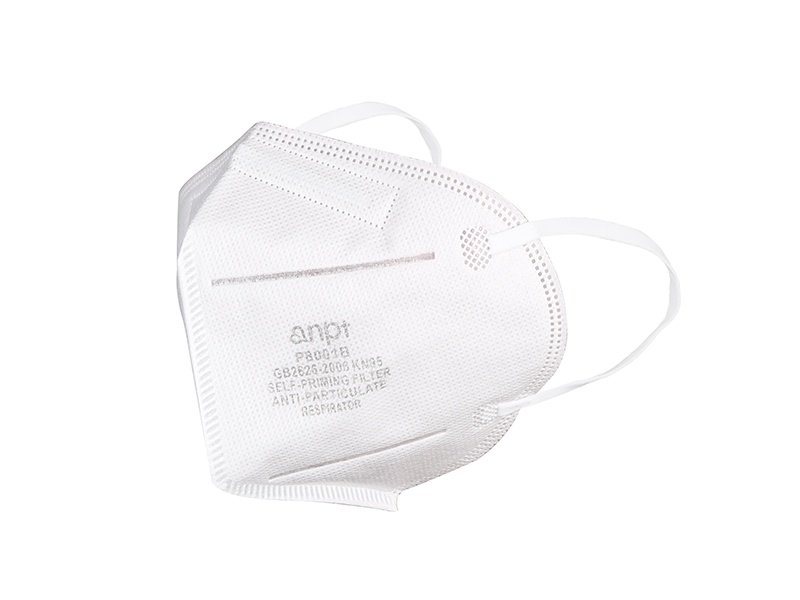With the continuous emergence of the new crown epidemic caused by the mutant strain of Omicron, professional terms such as N95 masks and
Disposable KN95 Masks have attracted widespread attention on the Internet, and the standard of medical masks has entered the public's field of vision. On June 5, 2022, Wu Huanyu, deputy director of the Shanghai Center for Disease Control and Prevention, said: "If citizens go to parks and other outdoor places, they can wear disposable medical surgical masks. If they go to shopping malls, supermarkets, offices and other indoor places, they can wear KN95 masks. /N95 mask. If you need to go to the hospital for medical treatment, it is recommended to wear a KN95/N95 and above particle protective mask or medical protective mask.”
So what is the concept of KN95/N95 and above protective masks? How are these masks different? How to choose according to different scenarios? Do you know all these?
Classification of protective masks
What we usually call KN95/N95 masks is actually a type of protective masks. In fact, "N" and "95" in "N95" have standards and meanings respectively. "N" means that the filter material of the middle layer of the mask is not oil-resistant (Not for oil), in addition to "R" (Resistant to oil), "P" type (Oil Proof) protective masks, and " 95" means that the filtration efficiency of particulate matter is ≥95%.
The above classification standards are actually based on NIOSH 42CFR84 in the United States. In fact, my country also has its own classification standard, namely GB 2626-2019, which is divided into KN for filtering non-oily particles and KP for filtering oily and non-oily particles. The technical requirements and test methods of the two standards are basically the same, but they belong to the certification standards of different countries.
For medical protective masks suitable for staff in medical institutions, my country has also specially formulated the GB19083-2010 standard. The standard not only focuses on the filtration efficiency of non-oily particles, but also requires anti-liquid penetration and anti-microbial functions, which can block droplets, blood, body fluids, secretions, etc.
In addition, Europe has introduced the EN149-2001 standard for protective masks. The masks of this standard no longer distinguish between oily and non-oily particulate matter, and are only divided into FFP1 (80%), FFP2 (94%), FFP3 (99%) according to the filtration efficiency of particulate matter. %) three levels.
When to use different masks
Particulate matter refers to a very broad concept. All kinds of dust, smoke, acid mist and spray paint mist in daily life and agricultural production belong to non-oily particulate matter. The particulate matter and coke oven smoke contained are classified as oily particulate matter. Most of these particles contain acidity, alkalinity or certain toxicity to the human body. Therefore, "KP/P" and "R" type protective masks should be worn on specific occasions to prevent these particles from damaging and destroying the human respiratory tract.
In daily life, we rarely come into contact with a large amount of oily particulate matter, and the particulate matter that needs to be protected in the hospital is not oily, so the "KN/N" mask can fully meet the daily work, life and medical needs.
For the selection of the filter level, is the closer to 100 the safer it is? Is it necessary to upgrade N95 masks to N99 or even N100 masks in daily life? In theory, higher filtering levels do indeed filter better. However, we have to consider that in actual use, masks with higher filtration efficiency are often accompanied by stronger breathing resistance, and long-term wearing can lead to poor breathing and even hypoxia; people with underlying lung diseases and the elderly may also suffer fatal blows . Therefore, in order to ensure tightness and reduce breathing resistance, high-level protective masks such as N99, N100, and FFP3 usually have special designs.
Besides filtration efficiency, what else should we pay attention to?
When using protective masks, not only should pay attention to the filtration efficiency, but also pay attention to the tightness of the face after wearing. The filtering efficiency of the mask can be guaranteed only when the mask is fully fitted to the face and does not leak air. If the mask is not worn properly because the breathing resistance is too large, the edge of the mask leaks, and the protective effect will be greatly reduced. When wearing, pay special attention to the size and shape of the mask, and choose the model that best matches your face shape.
The wearing time of the mask is also critical. Wearing it for a long time can lead to internal humidity, which not only affects the filtration efficiency, but also greatly increases the air resistance. Therefore, it is generally recommended to replace the mask after 4-6 hours of use; when the mask is obviously wet or breathing is obstructed , need to be replaced immediately.
For the choice of protective masks, it is not that the higher the filtering level, the better, the one that suits you is the best.

KN95 Mask
Description:
GB2626-2019
4-5 Layer
Filtration efficiency ≥ 95%
white
Benefits:
Effectively block dust, smoke, fog and microorganisms
Better air tightness, easy to carry with
Disposable
Dimension:
Length: 160±5mm
With: 105±5mm
